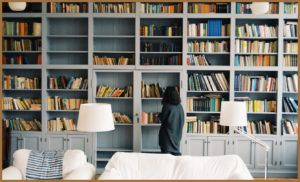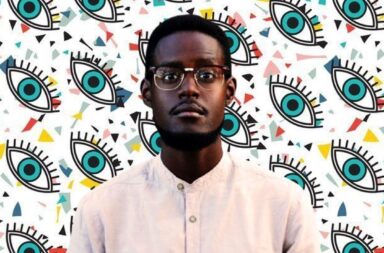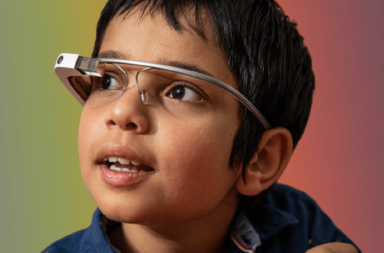At times it can often feel like having autism is a bit of a boys’ club, with reports of autistic females being few and far between. I have no doubt that in the past this has led to many, wrongly, believing that autistic females don’t exist, when in reality, female autism is not that uncommon. In fact, some reports state that as many as 33% of all autists are female… or 25%… or 6% (depending on who you believe).
With this in mind, today I wanted to look at some of the theories behind why there are so many more male autists than female and offer a few examples of what it’s like to be an autistic female.

Why are there less Autistic Females than Autistic Males?
Theory 1: Boys are more likely to Inherit Autism: Although the true cause of autism is still currently unknown, it is now widely assumed that autism comes from both inherent and environmental factors. For this reason, some theorise that men are more likely to have autism than women, as it is believed that autism may be passed down through the ‘Y’ chromosome. ‘’Y’ do they think this?’ you may ask. Well, in short, it is because a Y chromosome is something which all males have and most females do not (although it is possible).
Theory 2: Extreme Male Brain: The Extreme Male brain theory is something which warrants its very own discussion in the future, but until then, all you need to know is that it theorises that increased foetal testosterone levels in the womb (something which only male fetus produce) may cause autism. Although the theory of extreme maleness has been around for a while, it is still yet to be proven and is very often debated. Out of all the theories presented today, this is one you will want to take with the biggest pinch of salt.
Theory 3: Men are WEAK: So, have you ever wondered why men are often the first to go, whilst women continue long into their golden years: reading books, sipping gin and waiting for their grandkids to never show up? Well, as it turns out, men often head to the pearly gates before women because we are naturally weaker. Sure, we put on a good front, often growing taller than most females, but the reality is, women are much less susceptible to diseases and conditions both environmental and hereditary. Therefore, men are more likely to have autism because our bodies are simply more inviting to change.
Theory 4: Wrong tools for the Job: Although more of a series of unfortunate events than anything else, this theory comes from the idea that, thanks to years of seeing autism as a predominantly male condition, all the tests and research we have developed have a gender bias, which excludes many female autistic traits. As such, if this theory is to be believed, then it may be that there are just as many autistic women out there as autistic men – we are just looking for the wrong signs.
Theory 5: Autism in women and girls is under-reported, misdiagnosed and often unidentified: Perhaps the most agreed upon theory for why there are so few autistic females is simply because we can’t find them. Whilst men make a habit of having our voices heard, for one reason or another, women are more likely to disguise their feelings – especially if they feel that they are different in social settings. This has led to many autistic females developing a kind of autism camouflage, where they will, sadly, suppress their autistic traits, to fit in better with their friends and family.

How can You Tell if a Woman or Girl Has Autism?
With Theory 5 in mind, I thought it would be a good idea to finish this article by creating a short list, which could help people to recognise and identify autism in a loved one. This way less women and girls end up in the situation where they are constantly hiding their real selves and, one day, we may have a more realistic understanding of how many autistic females there actually are.
That being said, I feel I would be doing a massive disservice to females on the spectrum if the list which followed was just a bunch of, briefly touched upon, symptoms – which could be found through any google search. That’s not to say an awareness of the differences between male and female autism is a bad thing, it’s just that I feel like a list of this kind could potentially diminish the value of each trait, as it runs the risks of turning this page into a kind of women’s autism diagnosis bingo.
So, instead of creating a list of female autism signs and pretending that is all you need to know, I thought that, in honour of 2018’s World Autism Awareness Day theme: ‘Empowering women and girls on the spectrum’, I would let the ladies do the talking. What follows is a list of awesome autistic female advocates for you to check out, for first-hand experiences of what it looks, feels and means to be a female with autism.
(The list is a work in progress, but I’m certain from what I have so far there is more than enough to really understand how autism affects women)
- Siena Castellon: Founder of the neurodiverse support network Quantum Leap, as well as the winner of more awards than I can physically fit into one paragraph. Siena Castellon tackles bullying on the spectrum, while also encouraging autists to celebrate our differences.
- Sez Francis: A fellow content creator for the National Autistic Society, Sez (who always comes armed with an infectious smile) can be found on YouTube, where she shares her life experiences of being autistic and epileptic.
- Katy Gough: Creator of the popular YouTube channel Invisible I, Gough uses her enthusiastic and energetic personality to bring awareness and create discussion around disabilities like autism, which aren’t always noticeable.
- Temple Grandin: Recognised as one of the first autism advocates, Temple Grandin has: published multiple discussions on autism, been featured in Time magazine’s top 100 influential heroes and has been the subject of an award-winning biographical film.
- Georgia Harper: One of the Youth Patrons at ‘Ambitious about Autism‘ and soon to appear as a presenter on Channel 4’s ‘Are You Autistic?‘, Harper can also be found on both Twitter and on her recently launched blog, under ‘Mind The Flap‘ where she posts her thoughts and opinion on autism-related topics as well as the occasional Doctor Who review (because why not?).
- Lizzie Huxley-Jones: Currently the editor on Stim: an anthology exclusively comprises of autistic authors. Huxley-Jones can best be described as a bit of a bookworm, who tweets and blogs about all forms of literature – including many of the latest autism releases.
- Laura James: Journalist, columnist and writer, James’ 2017 non-fiction hit ‘Odd Girl Out‘ was the first time a UK publisher had ever released a memoir by a British autistic woman. Though I have not quite finished Odd Girl Out, from what I have read it’s hard not recommend)
- Carly Jones: Diagnosed with autism at 32, Jones’ particular advocacy has helped raise awareness and equality for autistic women, which in turn earned her an MBE in 2017.
- Rachael Lucas: Amongst many other things such as being a mindfulness and meditation teacher, Lucas is perhaps most well known as a writer, creating the incredible ‘The State of Grace‘ in 2017 – a young adult novel which has gone on to become a recommended support guide for newly diagnosed autistic girls by the National Autistic Society.

Carry on the Conversation
Today’s list was in no way meant to be a comprehensive depiction of all female autistic advocates, as when all is said and done, my inclusions were largely based on personal preference. So, if there is/are any female autism advocate you think deserves a mention, please let me know in the comments below.
As always I can also be found on Twitter @AutismRevised and via my email: AutisticandUnapologetic@gmail.com.
If you like what you have seen on the site today, then show your support by liking the Autistic & Unapologetic Facebook page and signing up to the Autistic & Unapologetic newsletter (found on the sidebar on laptops and underneath if you are reading this via mobile).
Thank you for reading and I will see you next Saturday for more thoughts from across the spectrum.


